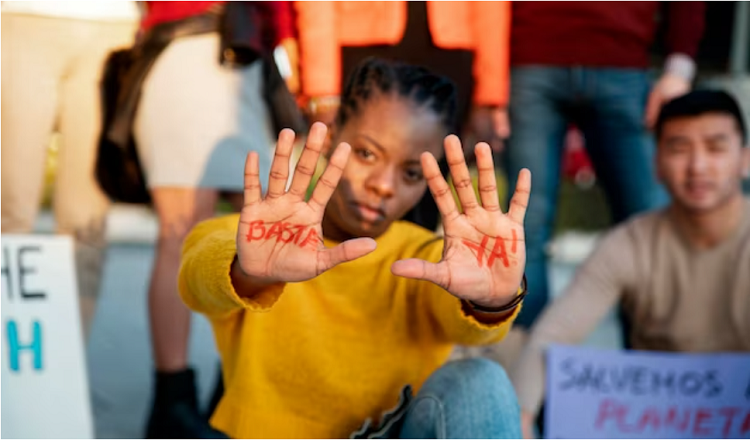The current state of the criminal justice system in the US, including issues such as mass incarceration and racial disparities
The US criminal justice system is frequently the focus of contentious discussion, and news stories about its problems and failures are published all over the world. The system has come under fire for failing to provide justice for all, from mass incarceration to racial inequities. But what is the criminal justice system exactly, and why is it important?
The criminal justice system is fundamentally a network of organizations, rules, and processes created to uphold social order and punish lawbreakers. This comprises the legal system, the courts, and the prison system. The system is far from flawless, despite its admirable goals. Numerous problems, such as mass incarceration and racial disparities that have a catastrophic effect on communities all over the nation, characterize the current situation of the criminal justice system in the US.
Given the significance of this subject, it is imperative to examine the current situation of the US criminal justice system, including its shortcomings and the actions that might be taken to rectify them. In this post, we’ll look at the system’s main problems right now, namely racial inequities and mass incarceration. We can better comprehend the issues the criminal justice system is experiencing and the pressing need for reform by in-depth investigation of these subjects. So let’s dive in and examine the US criminal justice system as it stands today.
American mass imprisonment
The term “mass incarceration” in the US describes the sharp rise in the number of people being held in jails, both municipal and state, as well as federal and state prisons. The criminal justice system and society at large have both been significantly impacted by this phenomena.
The government started enacting measures that were meant to be tough on crime in the 1970s, which is when mass incarceration in the US first started. Longer sentences, mandatory minimums, and the privatization of prisons were some of the developments that arose from this. With nearly 2 million individuals currently incarcerated, the US today has the highest rate of incarceration in the whole world.
Systemic racism, poverty, and the war on drugs are only a few of the causes of mass incarceration, which are complicated and multidimensional. Numerous negative effects of mass incarceration include the maintenance of poverty, the diminution of civil liberties, and the dissolution of families and communities. The health and welfare of people, families, and society as a whole depend on addressing mass incarceration.
Race-based Criminal Justice Discrepancies
In the criminal justice system, racial disparities refer to the unfair treatment of people depending on their race or ethnicity. This can take many forms, such as biased law enforcement, unfair sentencing, and disproportionate incarceration rates.
The legacy of slavery and Jim Crow legislation, which entrenched racism in the US, can be identified as the origin of racial inequities in the criminal justice system. Racial inequities in the criminal justice system still exist today, despite advancements in civil rights and racial justice, with persons of color being disproportionately affected by arrest, conviction, and punishment.
According to recent data, black people are detained at a rate that is more than five times that of white people, and other groups of color also endure higher rates of incarceration and harsher treatment by the system. Systemic racism, poverty, and prejudice are the core causes of racial inequities in the criminal justice system, which are multifaceted in nature. These differences have far-reaching effects, such as the continuation of inequality and the decline in public confidence in the legal system. A fair and reasonable criminal justice system cannot be achieved without addressing racial inequities.
Reforming policing and criminal justice
Initiatives aimed at enhancing the impartiality and efficiency of the criminal justice system include policing and criminal justice reform. Police practices are improved through policing reform, which aims to lessen police brutality, increase transparency, and foster better relationships with the community. Criminal justice reform aims to address problems like overuse of punitive measures, racial inequities, and mass incarceration.
Reforms in policing and criminal justice have historically been sluggish to take hold due to political apathy and resistance from those who are afraid of change. However, current events like the COVID-19 pandemic and the Black Lives Matter movement have brought these challenges to the fore.
Calls for more responsibility for police wrongdoing, alternatives to incarceration, and increased funding for community-based programs are some of the current initiatives for policing and criminal justice reform. Although the success of these measures is still being assessed, early results show that they may reduce crime and increase public confidence in law enforcement. For the criminal justice system to become more just and equitable, reform efforts must be made continuously.
Tech’s role in criminal justice
The use of technical tools and systems to support the investigation, prosecution, and oversight of criminal conduct is referred to as the use of technology in the criminal justice system. This might range from digital databases and automated risk assessment systems to DNA analysis and surveillance technology.
With the advent of DNA analysis and other forensic technology having a substantial impact on how crimes are investigated and prosecuted, technological breakthroughs have significantly influenced the criminal justice system. The criminal justice system is currently adopting new technologies including facial recognition software, body-worn cameras, and predictive policing algorithms.
Although technology has the ability to increase the effectiveness and precision of the criminal justice system, it also carries a number of serious concerns, including the possibility of bias and the violation of civil rights. Therefore, in order to ensure that technological innovations are utilized responsibly and ethically, the advantages and disadvantages of technology in the criminal justice system must be properly examined and considered.
Economic cost of justice system
The financial outlays connected with the investigation, prosecution, and incarceration of those who are charged with or found guilty of illegal conduct are referred to as the economic costs of the criminal justice system. These charges may cover anything from court fines and attorney fees to the price of keeping prisons operational and paying the wages of law enforcement personnel.
The financial burden of the criminal justice system has grown over time, with the US now spending billions of dollars per year on corrections and law enforcement. Government finances have been significantly impacted by this, with spending on criminal justice frequently displacing funds from other crucial social services like healthcare and education.
There are other negative effects of the criminal justice system’s high economic costs, such as the continuation of poverty and inequality, a decline in public safety, and strained bonds between law enforcement and the communities they serve. Therefore, in order to build a society that is more just and equal, it is crucial to address the financial costs of the criminal justice system.
Conclusion
In conclusion, problems like mass incarceration, racial inequities, and huge economic costs characterize the US criminal justice system as it stands now. These issues have a long history and still have a big effect on communities all around the country.
But there is still hope for improvement. The criminal justice system is currently undergoing reform, with programs concentrating on policing, criminal justice, and technological use. For the purpose of establishing a more just and equal society, advocacy and research on these topics must continue.
To support criminal justice reform, we must all take part. This can involve spreading awareness of the problems among people we know, getting involved in grassroots initiatives, and interacting with elected authorities to demand substantive change. Together, we can contribute to the development of a criminal justice system that is just, efficient, and equitable for all. Let’s all work to create a better future for our communities and for ourselves.
Read More You May Like:














Post Comment